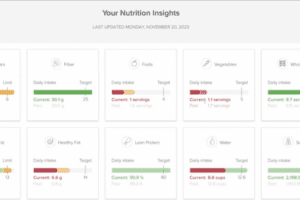 The following is a guest article by Tom Magnotta, COO & President at Apixio
The following is a guest article by Tom Magnotta, COO & President at Apixio
Albert Einstein famously said, “Whoever is careless with the truth in small matters cannot be trusted with important matters.” This quote lies at the heart of integrity, a powerful concept that applies equally critically in the healthcare payments environment as it does in daily life. Payment integrity is essential for ensuring financial accuracy, maintaining compliance with regulations, optimizing the healthcare delivery system, and removing administrative waste, which impacts the focus on patient care and quality outcomes. It also plays a crucial role in reducing overall healthcare costs and indirectly affects the quality of patient care.
Benefits of Implementing a Pre-Payment Model
Overreliance on a post-payment claims review process perpetuates systemic inaccuracy and waste. It’s estimated that up to 80 percent of medical bills contain errors amounting to billions of dollars that are lost annually to payers. That’s billions that cannot be reinvested back into the healthcare system to increase the affordability and accessibility of care. The three leading causes of payment errors are:
- Cases where claims were billed incorrectly by providers
- Claim was paid by the wrong primary payer or insurance company (correct fiduciary)
- Instances where claims were not paid according to the provider contract, applicable payment policies, or clinical guidelines.
The antiquated pay-and-chase approach is time-consuming, costly, and strains the payers-provider relationship. Payers battle administrative overload caused by reconciling inaccurate payments and reprocessing claims to pay the accurate reimbursement amount. Providers navigate abrasive recoveries and revenue instability. This reactive model leads to only ~70% of identified overpayments being recovered and/or corrected.
Shifting to a Pre-Payment Model
A pre-payment intervention is a proactive method used to verify the accuracy of claims upon adjudication and before payment is released to the provider. API-driven integration and AI capabilities support pre-payment review effectiveness by scanning claims with high accuracy in less than half a second, reducing manual efforts and minimizing the likelihood of errors slipping through the cracks.
For complex claims that require the review of additional documentation, such as itemized bills or medical records, the use of Natural Language Processing (NLP) technology combined with AI-driven workflow automation allows clinical and coding experts to assess the materials and make an accurate determination in less than 15 minutes. Claims are then approved for payment or denied with an explanation. This pre-payment model achieves a higher yield, of which 99% of errors detected are realized.
Addressing Adoption Obstacles
Switching from post-pay to pre-pay is transformative for health plans, but the process faces adoption obstacles. Barriers like limited technical capabilities or fear of change stall progress. With deeply entrenched legacy systems, many payers are anxious about their return on investment, which might cause them to resist adopting advanced pre-payment technologies. Still, maintaining the status quo drains resources and trust. Neither payers nor providers can sustain footing the bill for payment errors, making change imperative. The solution is migrating to accurate, efficient, and scalable pre-payment interventions. This approach helps payers get the payment right first, delivering value for payers and providers by eliminating downstream administrative costs and re-work processes on both sides.
Entrenched legacy systems, while often seen as impediments to evolving infrastructures, are now being revolutionized with low-tech lift solutions. The introduction of API-based connectivity to payers’ claim systems streamlines integration, significantly reducing the investment in technology and training previously deemed essential. Providers, initially apprehensive about potential revenue impacts or practice disruptions, are finding this transition more manageable than anticipated. The ease of integration justifies weathering the initial growing pains to reap its substantial benefits in cost avoidance and improved accuracy.
Transitioning Successfully to a Pre-Payment Model
To ensure a seamless transition to the innovative pre-payment model, payers should implement changes in phases to reduce complexities. Initiating staged rollouts and strong technical support and incentives can foster active participation. Although the initial phase might increase administrative tasks due to new technology adaptation and error rectifications, effective communication and adept change management strategies are key to mitigating these challenges.
It’s critical to involve healthcare providers from the outset, establishing a transparent dialogue about the transition’s impact and benefits. Highlighting the mutual advantages, such as cost savings and enhanced stability due to decreased variability in claims, can strengthen this partnership. Regular meetings and open communication channels are vital to align goals and gather feedback, thus navigating any obstacles collaboratively.
In adopting pre-payment systems, the synergy between payers and providers is paramount. Their commitment to communication and collaboration underlines their belief in the model’s superiority. Pre-payment systems not only drive heightened accuracy and efficiency in healthcare payments — they also enable payers and providers to focus on delivering a higher quality of care to members and patients. The potential benefits justify the commitment to a more frictionless provider-payer payment ecosystem.
Paving the Way for a Pre-Payment Future
The future of payment integrity is ripe for revolution, driven by emerging technologies and an evolving healthcare industry. This transformation will be a mass migration from dated, reactive post-pay systems to advanced AI-powered pre-payment solutions.
AI, machine learning, and intelligent automation will be central to this shift, eliminating manual inefficiencies. Claims can be rapidly scanned against a library of advanced analytics-driven content, including payers’ policies, business rules, reimbursement methodology, and more. This library can be configured to meet the needs of each individual organization. New technologies are forging a different direction with innovative solutions that are getting excellent traction by disrupting legacy approaches to payment integrity.
As the pre-payment model gains momentum, we all stand to benefit from reducing costs and improving access, affordability, and better outcomes for members and patients. These developments will contribute to a more sustainable and effective healthcare system. With advanced pre-payment platforms that can make a major difference, we’re witnessing the start of an era of increased accuracy, efficiency, and transparency in healthcare payments.













